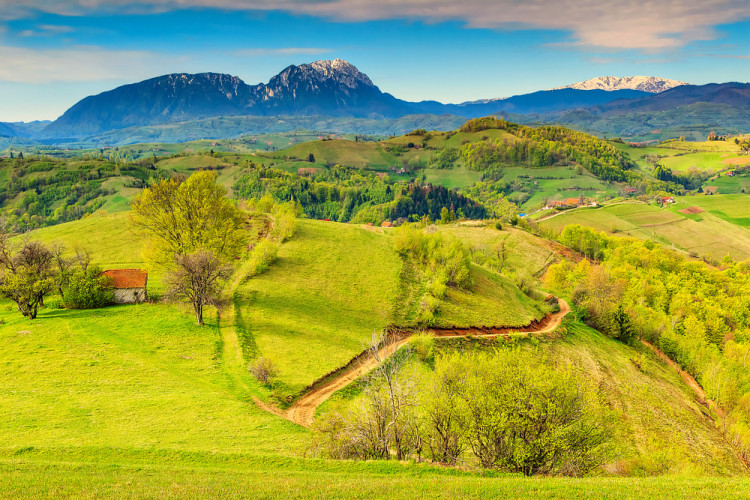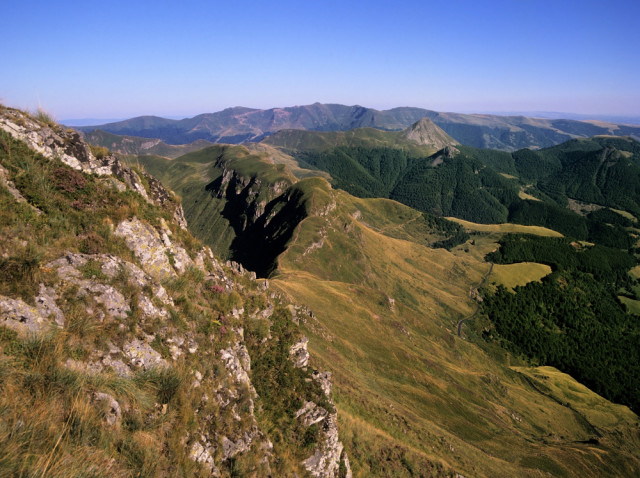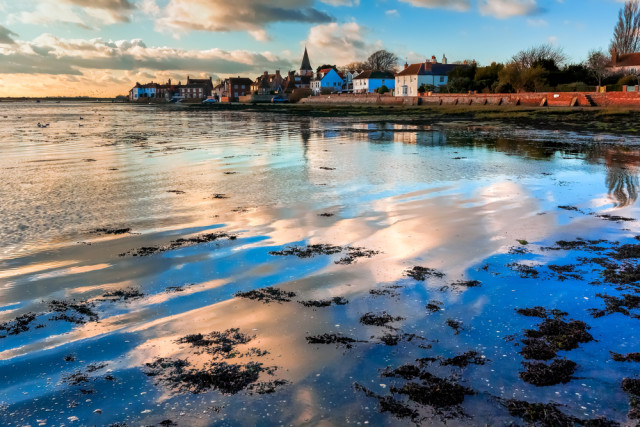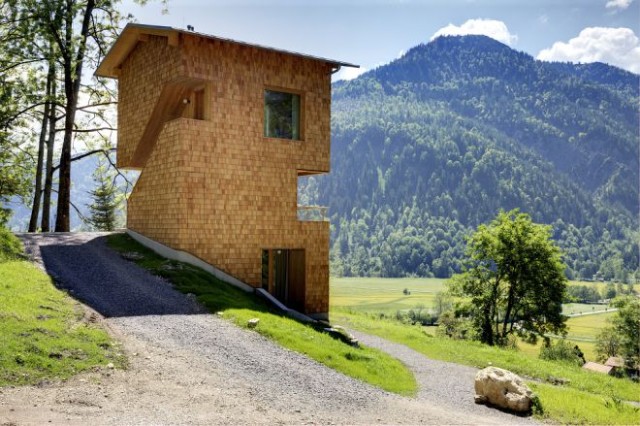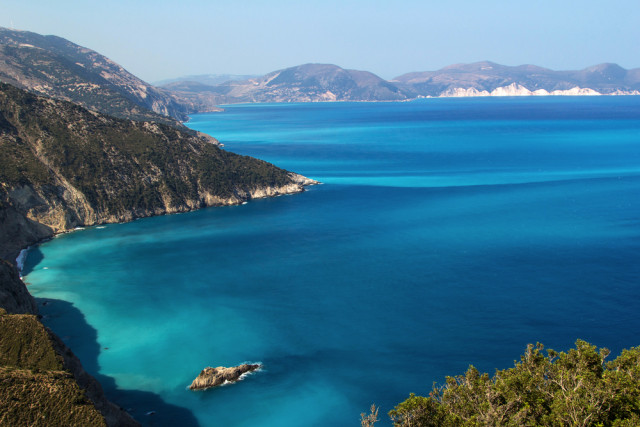Summit of Puy Mary Volcano in Auvergne Volcanoes Regional Park via Shutterstock
BY VICTORIA GAFFNEY
Whether you’re aching for a scenic stay along a steep mountainside overlooking a verdant valley, or yearning for a hilltop house offering panoramic views of turquoise waters, there are plenty of eco-friendly travel options for the more secluded European vacation. The following five eco-lodges and hotels are not only ecologically savvy, they are tucked away in remote places, away from the hustle and bustle of cosmopolitan cities.
INSTANT D’ABSOLU, France
A former lava stone farmhouse on a three hundred year old farm, Instant d’Absolu—or “timeless rare moments”— is perched on a plateau among the Auvergne Volcanoes. Owners Laurence Costa and Daniel Siegel used African eco-lodges as a model for this picturesque mountain escape, which is located on the breathtaking banks of the Lac du Pêcher amid a bird migration corridor, faces the Puy Mary Volcano, and is nestled among the dense Pinatelle Forest of pine trees. This hideaway is an ideal place to absorb the sights, sounds, and smells of nature. Unwind at the Boreal Spa, which draws on regional materials for its services (such as lava stones used for peeling and local botanicals), and, while there, relax in the Nordic steam room or outdoor hot tub offering spectacular views of the lake.
This 12-room eco-lodge has ecological wall paint, cellulose insulation, recycled fiber carpets, recycled garden furniture, and biodegradable toiletries. The on-site restaurant boasts local ingredients—such as lentils that come from the volcanic plateau and green beans from the lodge’s bio-garden. Meander down the nature trail, go bird watching at the bird observatory, or simply wander through the forest for a deer-spotting excursion. No matter how you choose to spend your time, Instant d’Absolu is a place to welcome the multi-sensory embrace of nature.
Bosham near Chichester in West Sussex, England via Shutterstock
OLD CHAPEL FORGE, England
Deep in the countryside of Chichester in West Sussex, England lies an eco-friendly, historical Bed & Breakfast, the Old Chapel Forge. In 1611, the farm’s owner constructed the chapel—composed of stone and flint—and the main house. The chapel was supposedly last used for its intended religious purposes in 1847, and during World War II the property served as an airfield.
Today, the owners strive to provide guests with “a green tourism experience,” by partnering with local farms and heating water though solar panels. There are a number of lodging options, such as The Chapel Suites and the Cottage Family Suite (a charming small cottage complete with a garden). Guests can stroll or cycle through the English countryside, visit the beautiful nearby Chichester Cathedral, or admire the Arundel Castle.
Photo via natur-hotel-tannerhof.de Gallery page
TANNERHOF, Germany
In Southern Germany, there is a historical property known as Tannerhof. Ensconced in the Bavarian Alps, at the base of the Wendelstein Mountain, this site isn’t just an eco-hotel practicing sound ecological principles, it’s also a health resort. When Dr. Christian von Mengershausen and his wife Barbara obtained the mountain village property in 1904, they first conceived of the idea to create a health-focused resort. The vision has been carried forward into the present where current hosts, Burgi von Mengershausen and her husband, Roger Brandes, both doctors, are part of the fourth generation to maintain the Tannerhof tradition.
The property boasts a number of health packages—from the more active to the more restorative, from those with an emphasis on wellbeing to those with a strong nutrition focus. Guests can choose between many different lodgings. The “Lufthütten”—or “air huts”—are the original early-twentieth century wooden cabins built by Christian von Mengershausen in the hillsides. They are small and accommodate one to two people (two other cabins are slightly larger). In contrast to the air huts, the “Hüttenturme”—or hut towers—are modern wooden huts designed by Florian Nagler, an architect from Munich. Here the staircases are carved into the sides of the huts, giving them the appearance of being simultaneously inside and outside the rectangular buildings. Large windows ensure that the huts are constantly suffused in natural light. Guests can enjoy Tannerhof’s cultural program—which includes readings and lectures—practice yoga and tai chi, hike the Bayrischzeller valley, and cross-country ski. Of course, visitors can also explore the natural splendor of the Bavarian Alps simply by stepping outside.
Image of Kefalonia in Ionian Sea via Shutterstock
SKINOS ILIVATOS BOUTIQUE ECO VILLA, Greece
The Skinos Ilivatos Boutique Eco Villa beckons from the fertile Skinos valley along Paliki’s southern coast in Greece. The idyllic villa all started when the family owners decided to go back to their home region of Kefalonia—an island off the coast of the Greek mainland in the Ionian Sea. In 2009, they started their farm located near the Chavriata village and a mere 50 meters from the sea. Visitors can stay in the villa, which can fit up to 10 guests. The rooms were built according to bio-climatic architectural guidelines—principles that take the climate of the region into account and use environmental sources—and other eco-friendly materials. The villa also uses photovoltaic panels and a wind generator for electricity, and composts organic and recycles inorganic garbage. Guests can swim and fish in the cerulean seas, or take a dip in the villa’s very own seawater pool. Dogs, cats, horses and other animals roam the farm and villa grounds, reinforcing the image of a serene, untapped haven of nature.
Image of Transylvania, Romania via Shutterstock
HRH PRINCE CHARLES’ GUESTHOUSE, Romania
Step back into the distant medieval past in the village of Zalanpatak where, along a bucolic road, Prince Charles’ Guesthouse awaits. Located in the Transylvania countryside of Romania—a place famous for the setting of Bram Stoker’s gothic novel “Dracula”—the property is the site of the Kálnoky family’s former 400-year-old glass factory that operated until the early 20th century. Prince Charles, who has distant relatives from Romania, visited Transylvania in 1998 and became quickly enamored with the old-fashioned pace and traditional agrarian way of life. He runs the property with Count Tibor Kálnoky (whose relatives had fled the Nazis and communist dictators).
People still reside in the village today and the Prince of Wales maintains the buildings that previously belonged to the judge supervising the village. Hidden among Romanian forest, flowers, and springs, the property is steeped in the splendor of nature and wildlife. Seven double bedrooms are housed in quaint cottages whose restorations and furnishings are in keeping with the customary materials and styles of Transylvania. Travelers can track bears (some allegedly come as close as the backyard), hike, learn the botany of local flora, or simply take a walk among the pastoral green hills. Transylvania’s archaic look and feel creates an illusion of a farming region frozen in time. Prince Charles hopes to utilize sustainable travel to maintain and uphold the old-style way of life in this village. Recently, on June 2, 2015, he launched the “Prince of Wales’ Romania Foundation,” a charity that works to preserve the agricultural and cultural traditions and foster sustainability in the region.
 ABOUT THE WRITER
ABOUT THE WRITER
Victoria Gaffney is currently pursuing an MA in Nonfiction Writing at Johns Hopkins in Washington D.C. She is a graduate of Haverford College where she majored in English and developed a passion for words and stories. She enjoys traveling and engaging with new people and perspectives, and relishes the thrill of late nights spent reading a new book or huddling in front of a computer screen to write. In her free time, she can be found drinking copious amounts of coffee, playing with dogs, practicing yoga and wandering around new streets without a plan. Victoria hopes to use writing to help impact positive change. Follow her on Twitter.
